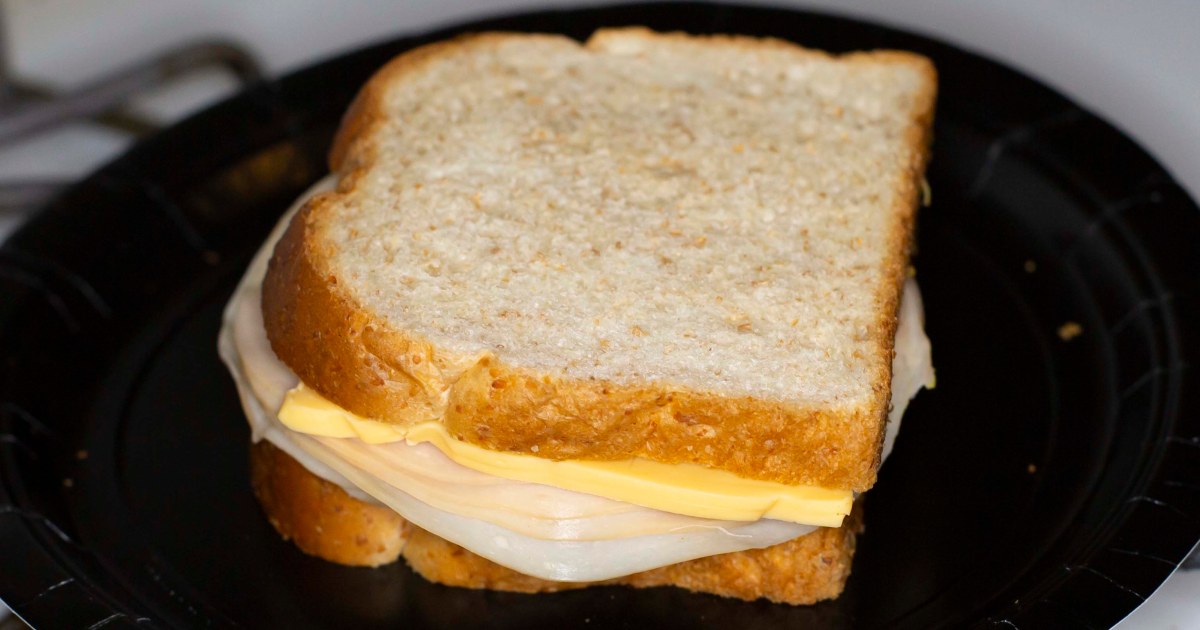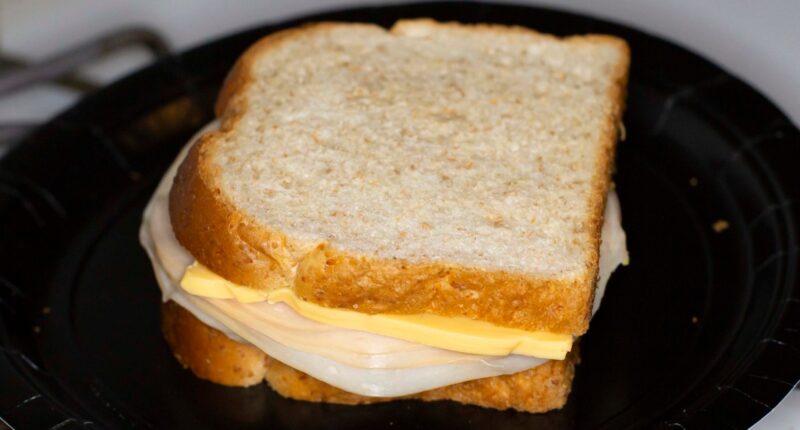
BEIJING — The plain ham sandwiches, simple salads and other American-style packed lunches that fill office refrigerators don’t exactly scream “Instagram.” But they’re a social media sensation in China, where they have their own hashtag: #WhitePeopleFood.
The trend appears to have started in May, when a Chinese social media user posted a video that quickly went viral of a fellow train passenger in Switzerland pulling lettuce leaves from a bag and layering them with ham and mustard.
“Is there anything more ‘white people food’ than this?” the caption read.
The term pokes fun at the casual, on-the-go way people eat in the United States, Europe and elsewhere in the West. Compared with the warm, flavorful and elaborately prepared food people from China are used to, meals made with a handful of cold and unseasoned ingredients can seem underwhelming or just plain inedible.
Discussions of “white people food” on Chinese social media are filled with witty and withering descriptions: “Food of suffering.” “A meal to maintain vital signs.” “What death must feel like.”
But as a cuisine it does have its advantages, as stressed-out young workers are discovering in cities across China.
“I had been having sandwiches for lunch for more than half a year,” said Gao Duan, a 30-year-old playwright in the northern port city of Tianjin. “It doesn’t have a strong smell and it’s convenient to eat in the office.”
Eventually Gao had enough of the daily sandwiches, which she said she ate “just to get through the afternoon.”
“There is no point eating good food in the workplace, because food should be divine and enjoyed properly,” she said.
On Xiaohongshu, China’s equivalent of Instagram, users are rushing to post their own versions of “white people food,” a topic with more than 13 million views that is reminiscent of the “sad desk lunch” meme from the 2010s.
One user told her followers that she was enjoying her bagel sandwich stuffed with ham, cheese and rocket leaves. Another showed a boxed lunch featuring cucumber and tomato, as well as ready-made boiled eggs and potatoes, captioned “no heating, no cutting, no seasoning, done in two minutes.”
Though “white people food” is far from a novelty in China, which has had Western fast-food chains since the 1980s, the social media trend is driven by changes in how people are living, as well as the eye-catching hashtag.
“The name looks a bit politically incorrect,” said Cao Yu, who studies food culture at Jinan University in the southern metropolis of Guangzhou. “But it’s not meant to be offensive.”
“People simply think it doesn’t look very tasty,” Cao added.
A typical Chinese lunch includes staple foods such as rice or noodles and a few warm dishes made with multiple ingredients, spices and cooking techniques from frying to stewing to braising. From start to finish, preparation can easily take 30 minutes to an hour.
That was easier when most workers, many of them working for state-owned companies with their own canteens, could depend on extended lunch breaks long enough for a hearty meal and an early-afternoon nap.
But China’s modern “996” work culture — working from 9 a.m. to 9 p.m., six days a week — leaves little time to make or eat a complicated meal.
“Young people want to save more time for themselves,” Cao said. “When you realize you can just eat a carrot raw, a door to a new world opens.”
Simplicity isn’t the only reason “white people food” has come to look more appealing.
Li Qiaoying, a 26-year-old marketing consultant based in Shenzhen who enjoys yoga, Pilates and dance cardio, said it aligns with her idea of a healthy diet and helps her keep fit.
“It is lighter, unlike the deep-fried or stewed Chinese dishes,” she said. “Food that’s too oily or strong is a burden to the body.”
It’s also considered cheaper by urban workers facing high living expenses and record youth unemployment. Making a Western-style boxed lunch costs less than 20 yuan ($2.80), Li said, compared with 30 yuan ($4.20) for takeout and 100 yuan ($13.80) to eat at a restaurant. In a country where the average worker makes less than 9,000 yuan ($1,240) a month, the difference adds up quickly.
Other young professionals, considering the effort that would be required to make a proper Chinese meal, are so exhausted they just can’t be bothered — a reflection of a growing movement to minimize work, social activities and other exertion that is known in China as “lying flat.”
“Food is an important part of Chinese culture,” said Miao Jia, assistant professor of sociology at NYU Shanghai. “But many young people will sacrifice taste since they only eat to survive.”
“White people food” still has many detractors in a country with a long and rich culinary tradition.
“It’s absurd for an adult to eat this for daily nutrition,” said Xianglan Huo, a college student in the southern city of Kunming. “The portion is not even enough for my cat.”
“It’s too cruel to the body,” Huo said. “I prefer rich cuisines.”
But it also has its defenders — even when it comes to taste.
Alice Dong, a 34-year-old office worker in Beijing, said she loves her salad lunches because they resemble some of the cold dishes she ate growing up in northeast China.
“My mom used to mix radish, cucumber and shredded potato with salt, vinegar and chili sauce,” she said. “To me, Western salad is just a change of a few ingredients and sauce.”
Source: | This article originally belongs to Nbcnews.com










